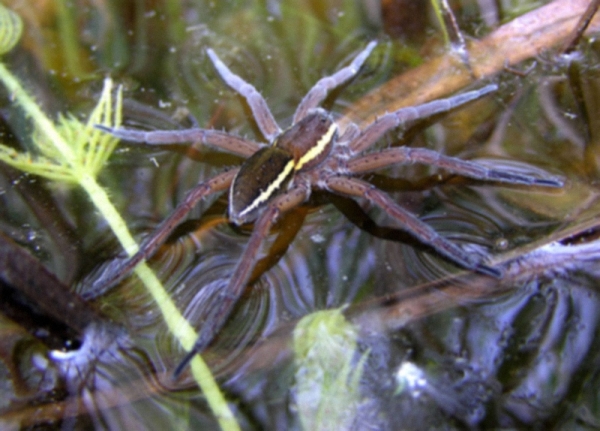Facts About Great raft spider
The great raft spider, also known as the fen raft spider, is a captivating species native to Europe and a member of the Pisauridae family. Scientifically named Dolomedes plantarius, this semi-aquatic spider thrives in neutral to alkaline, unpolluted fens and grazing marshes. It is a large spider with distinctive markings and is often confused with its close relative, Dolomedes fimbriatus.
The great raft spider primarily preys on aquatic invertebrates but occasionally catches small vertebrates. It possesses a unique sensory system that enables it to detect vibrations on the water surface, making it an efficient hunter. The spider's life cycle includes hibernation at the juvenile stage, water-based courtship rituals, and egg-laying in silk sacs carried by females. The females also guard their young in nursery webs.
While this species is widespread across Europe and Russia, habitat loss has led to a decline in its populations, earning it a vulnerable status on the IUCN Red List. In the United Kingdom, the great raft spider is considered endangered. Conservation efforts are focused on protecting and restoring its habitats to increase its range and population density. Reintroduction programs aim to establish new populations and enhance genetic diversity. For instance, the first confirmed sighting of this spider in Norway was recorded in 2013, highlighting its expanding range.
The great raft spider's unique ecological adaptations and declining populations underscore the importance of ongoing conservation efforts to protect and preserve this remarkable species.

 Ireland
Ireland